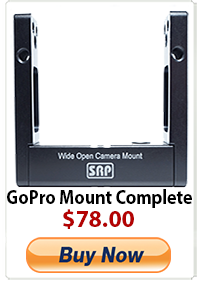Shooting in Senegal (Part 2): Getting Acclimated
By: Chris Collins
I had my work cut out for me before departing for Senegal. Investigating the safety of the places I would be shooting was my first priority, but that was quickly overshadowed by rental lists, carnets, pickups, packing, finding a B camera op, etc. As with any shoot, I was hoping for the best while preparing for the worst. Upon our arrival in Dakar International Airport my stress level was balanced by the reemergence of my childhood fascination of the unknown.
It didn’t take nearly as long as I had expected to adjust to the third world, and my constant curiosity enabled me to immerse myself in the local culture. The big obstacle was the language barrier. Educated Senegalese people speak Wolof (the national language) and French. Very few people speak English, and those who do generally live in the capitol Dakar which is far from the villages where our film takes place. To further complicate things, the village people who are the focus of our film speak a Nomadic language called Polar which few educated Senegalese people understand. To make a long story short our translator spoke Polar, Wolof, and French, but virtually no English. Therefore, every little request had to go through our director, Jeremy Teicher, who would translate to French so our translator could then translate into Polar or Wolof. As you could imagine, this not only slowed us down but also interfered with the creative process. Having to interrupt a director’s concentration for the sake of a translation is simply unacceptable, so we spent alot of time waiting before we could address things like placing actors and checking sound levels.
As with many ultra low budget productions we failed to address the true importance of sound. A potential sponsorship fell through at the last minute, so we arrived armed only with two lavalier mics, a boom pole, a Zoom H4N recorder, and a B camera operator responsible for overseeing our two inexperienced Senegalese sound guys. It was apparent within the first few days that this would be problematic. First, the foam windscreen for our shotgun mic was virtually worthless on windy days and we had no dead cat. Second, Senegalese people tend to wear loose clothing since it is so hot, and this led to major rustling issues with the lavs. Third, our talent spoke extremely softly every time we went up for a take, and there are constantly sounds from cows, goats, and insects in the background.
Next came the challenge of proper exposure on deep dark skin in the blistering African landscape. I knew how reflective dark skin tends to be based on other African films I had seen. I strongly dislike the blue kick that comes from the sky’s reflection on people’s faces, and I especially dislike how these reflections can be extra apparent based on surroundings such as colored buildings, trees, and so on.
While we started our trip with several technical challenges, we still started on a good note as we were well received by our Senegalese cast and crew. We couldn’t speak to each other, so we learned to communicate with gestures and smiles (the international symbol for “I’m having the time of my life!”). Fortunately Senegalese people enjoy poking fun of each other and giving high fives, so we naturally fit right in. After we established a solid relationship with our Senegalese friends, it became much easier to tackle our technical difficulties… and that’s a story for time.











Pingback: Shooting in Senegal (Part 1): Talent Comes First « Wide Open Camera
Pingback: My Homepage